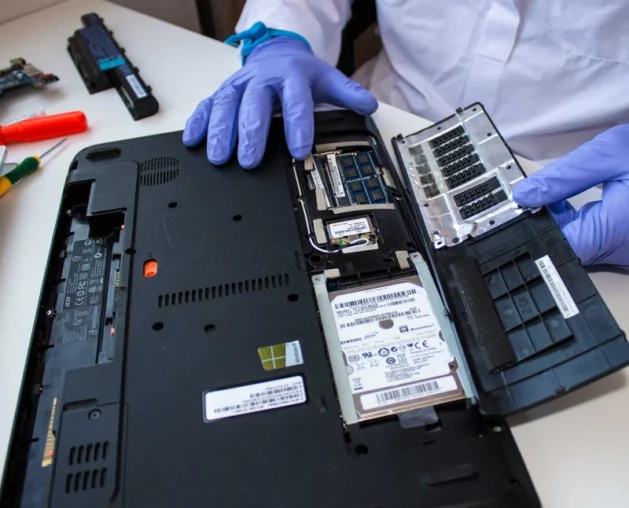Computers are essential tools in both our personal and professional lives, but like any machine, they can occasionally encounter issues. Fortunately, many computer problems can be resolved without needing to replace the entire system. By understanding the main components of a computer that can be repaired or upgraded, users can quickly identify issues and choose the best solutions. Whether you have a desktop or a laptop, several key parts can be fixed or enhanced to improve performance and extend the device’s lifespan.
This article will cover the primary computer components that are frequently repaired, the types of problems they may face, and the common methods for fixing them.
1. Hard Drive (HDD or SSD)
The hard drive stores all data on your computer, including the operating system, software, and personal files. It is one of the most critical components and is also one of the most vulnerable.
Common Issues:
– Mechanical failure (in HDDs)
– Bad sectors or corrupted files
– Slow performance
– Accidental deletion or data corruption
Fix Options:
– Data recovery software
– Hard drive replacement
– Upgrading to a solid-state drive (SSD) for better speed
– Reformatting and reinstalling the operating system
Hard drives can often be replaced or upgraded without changing the entire system. In many cases, a failing hard drive can be cloned onto a new one to preserve data and settings.
2. RAM (Random Access Memory)
RAM is responsible for short-term data storage and affects how quickly and efficiently your computer performs tasks.
Common Issues:
– Computer crashes or blue screen errors
– Sluggish performance when multitasking
– Memory not being detected by the system
Fix Options:
– Re-seating the RAM modules
– Cleaning the RAM contacts
– Replacing faulty RAM sticks
– Upgrading RAM capacity for better performance
RAM issues are generally easy to diagnose and fix, particularly in desktops where access to memory slots is straightforward.
3. Motherboard
The motherboard is the main circuit board that connects all other parts of the computer. It’s a complex component and can develop various types of issues.
Common Issues:
– No power or random shutdowns
– Peripheral devices not functioning
– Burning smell or visible damage
– Faulty capacitors
Fix Options:
– Replacing damaged capacitors
– Cleaning corrosion or dust buildup
– BIOS updates or reflash
– Replacing the motherboard if it’s beyond repair
While repairing a motherboard is possible, particularly in high-end systems, replacement is often more cost-effective if the damage is severe.
4. Power Supply Unit (PSU)
The PSU supplies electrical power to the entire system. A faulty PSU can prevent the computer from turning on or cause instability.
Common Issues:
– Computer not turning on
– Sudden shutdowns or restarts
– Burning smell or sparks
Fix Options:
– Testing with a multimeter
– Replacing the power supply
– Ensuring proper wattage for upgraded components
Replacing a PSU is usually straightforward, especially in desktops, and can resolve many power-related problems.
5. Graphics Card (GPU)
The GPU is responsible for rendering images, video, and animations. It’s particularly important for gaming, video editing, and design work.
Common Issues:
– Display artifacts or glitches
– System crashes during gaming
– No display signal
– Overheating
Fix Options:
– Reinstalling or updating drivers
– Cleaning the GPU and reapplying thermal paste
– Checking the power connectors
– Replacing the GPU if it’s defective
High-end graphics cards can be expensive, so troubleshooting them before replacing is often worth the effort.
6. Cooling Fans and Heat Sinks
Cooling components help regulate temperature inside the system. Overheating can damage various parts of the computer.
Common Issues:
– Loud or rattling fan noises
– System overheating or thermal shutdowns
– Dust buildup
Fix Options:
– Cleaning the fans and vents
– Replacing noisy or non-functional fans
– Reapplying thermal paste to the CPU or GPU
– Installing additional cooling solutions
Maintaining proper cooling is vital for the long-term health of your computer and can be accomplished with minimal tools.
7. Keyboard and Touchpad (Laptops)
Input devices like the keyboard and touchpad can wear out over time, especially on laptops.
Common Issues:
– Keys not functioning
– Touchpad unresponsive or erratic
– Liquid spills
Fix Options:
– Cleaning under the keys
– Replacing the keyboard or touchpad
– Using an external USB keyboard or mouse as a workaround
Laptop keyboards are modular and can usually be replaced without needing to replace the entire device.
By being aware of these components and their common issues, users can effectively troubleshoot and repair their computers, saving time and money.




